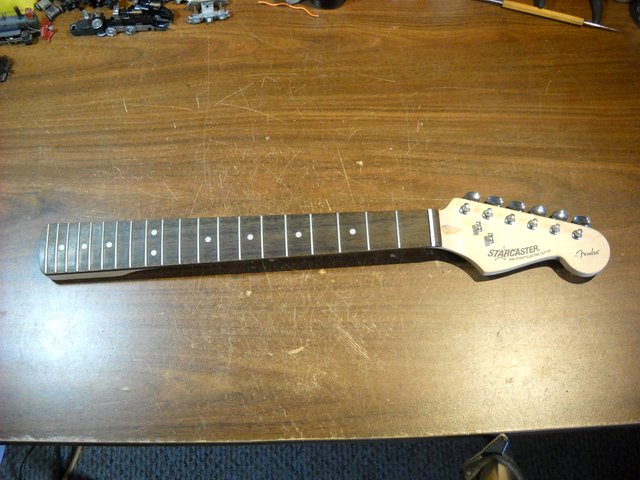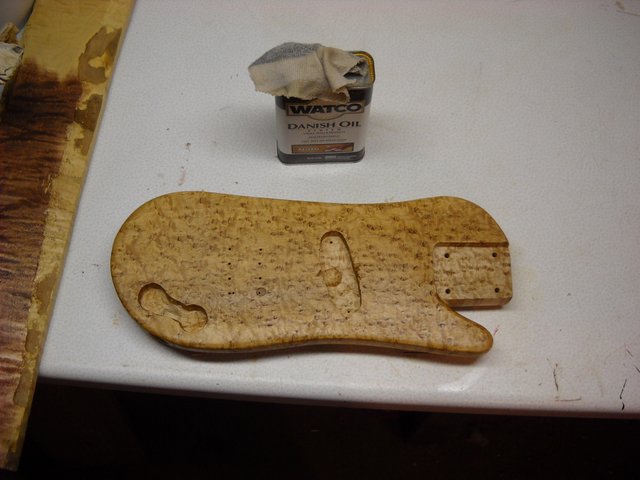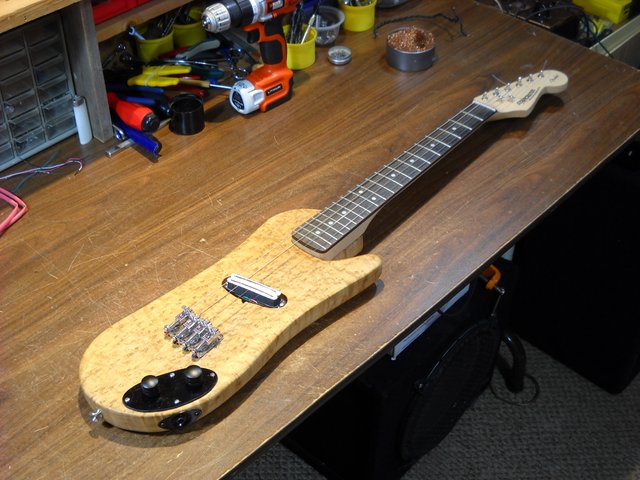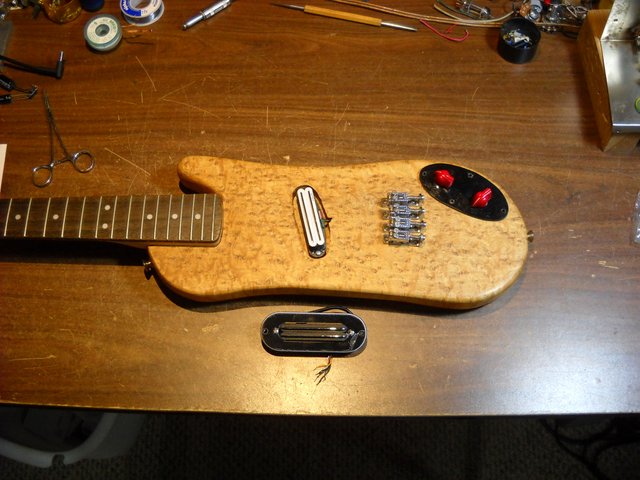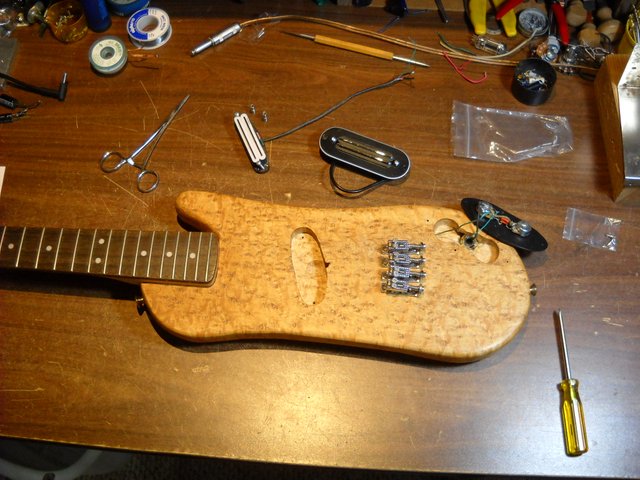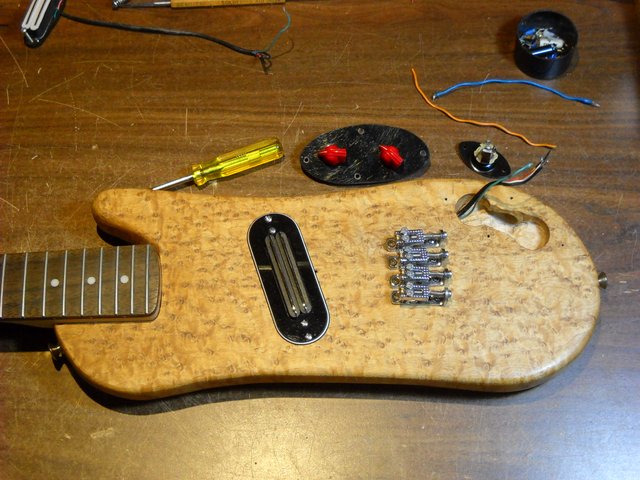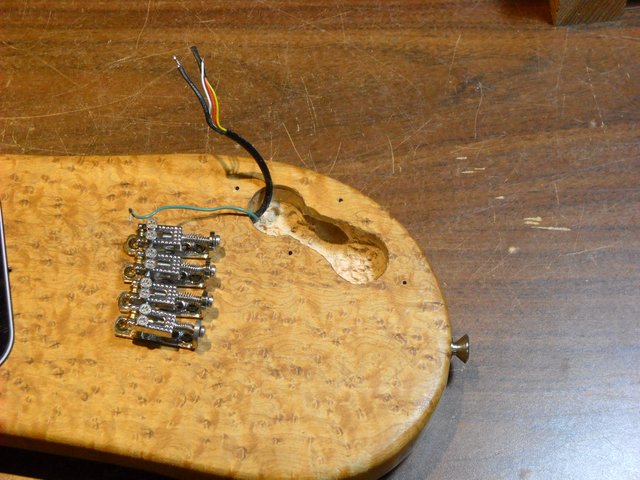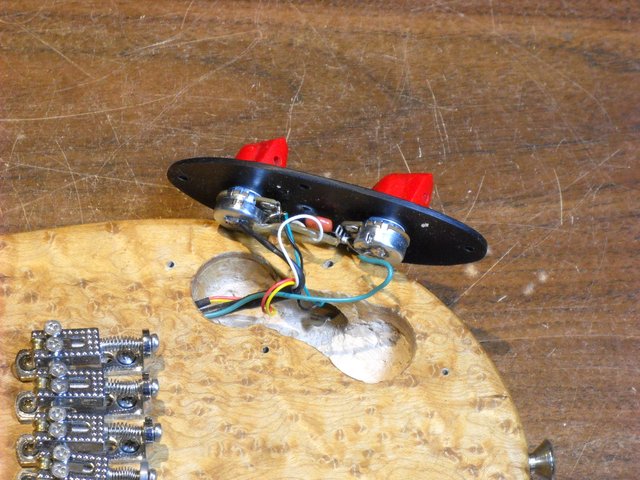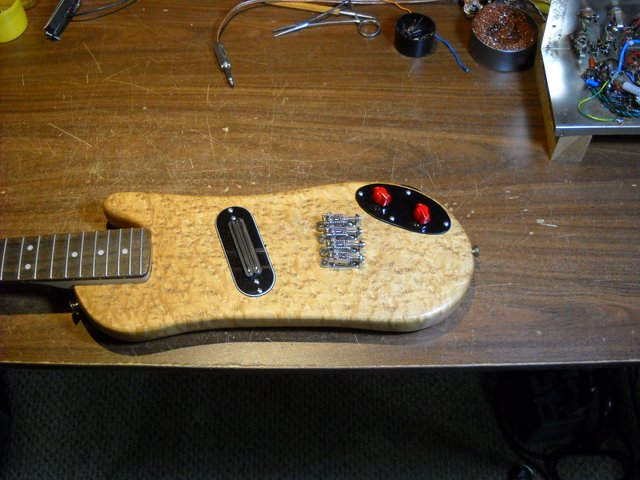Hello, steemians and music lovers!
For today's post, I'd like to tell you about replacing the pickup in my electric baritone ukulele. This is an instrument that I built a couple of years ago using a short scale guitar neck that I bought second hand on ebay, and a home made solid maple body. This is the neck I used. It was from a Fender Starcaster short scale guitar. It has a 23 inch scale from the bridge to the nut.
I built the body from a solid piece of bird's eye maple.
This is what the instrument looked like when I was finished building it.
As you can see in the previous picture, there's no cover plate for the pickup. The bari uke stayed that way for a while, and then I had to replace the volume and tone controls in it because I had installed used ones when I built the uke and they were giving me trouble. I replaced the knobs at the same time with a pair of red "chicken head" knobs.
I recently decided to replace the pickup in this instrument with a different bar magnet pickup that came with a cover plate for the hole in the body.
This is the instrument with the new pickup sitting next to the body. I already had the strings removed when I took this picture.
The first step in the process was to remove the cover plate with the controls. The wires for the pickup are soldered onto the controls, so I had to desolder them to remove the pickup.
After removing the old pickup, the new pickup was fitted to the body. I had to get the pickup centered in the pickup cavity so that I could mark the places to drill the screw holes for the pickup cover plate. This pickup is mounted to the body by the cover plate screws.
When I tried to fit the wires into the controls cavity, I discovered that it was too shallow to fit everything without problems. I decided to make the cavity deeper, something I probably should have done when I built the ukulele. I drilled a bunch of shallow holes close together in the bottom of the cavity, probably about 1/4 inch, or 6mm deep. Drilling the holes close together makes it easier to remove the rest of the wood from the bottom of the cavity. I didn't want to go any deeper because I didn't want to accidentally go through the bottom of the body.
After drilling out as much of the wood as I could, I used one of my carving chisels to cut out the rest of what I needed to remove. After test fitting to make sure everything fit, I soldered the new pickup wires onto the controls.
After making sure that the cavity was deep enough for the controls and all the wires to fit into it, I mounted the controls assembly back in place with it's cover plate.
After putting it back together, all that was left to do was to put a set of new strings on it. This baritone ukulele uses the same strings as an electric guitar, without using the A string or the low E string. The strings are tuned to the same notes as a guitar, E, B, G, and D.
When you think about it, the baritone ukulele is just a short scale 4 string guitar. Most acoustic baritone ukuleles have a 20 inch scale from the bridge to the nut, but I didn't have access to a neck with a scale that short, so I worked with what I could get. It plays just like a regular guitar with the E and A strings removed.
That's all I have for this post, I hope you found it interesting!


